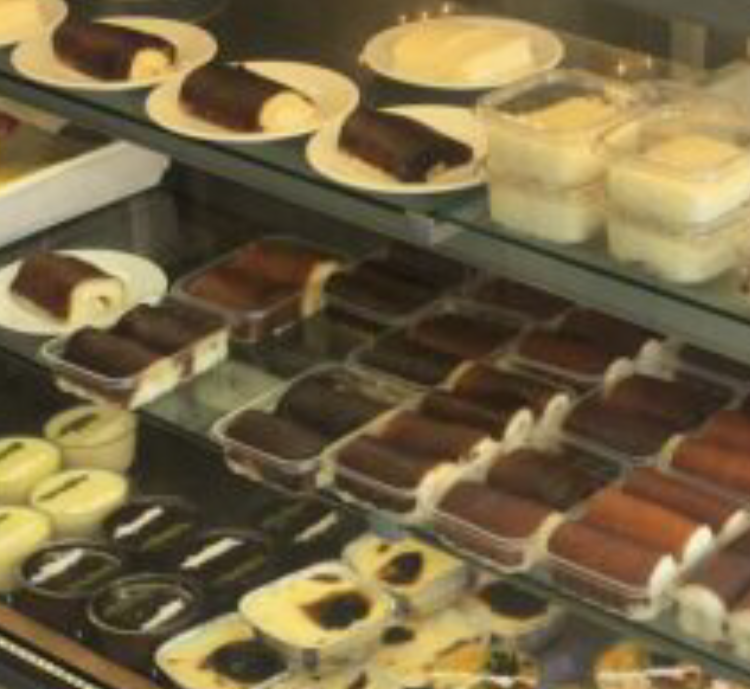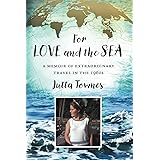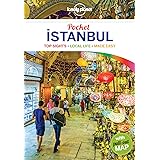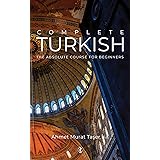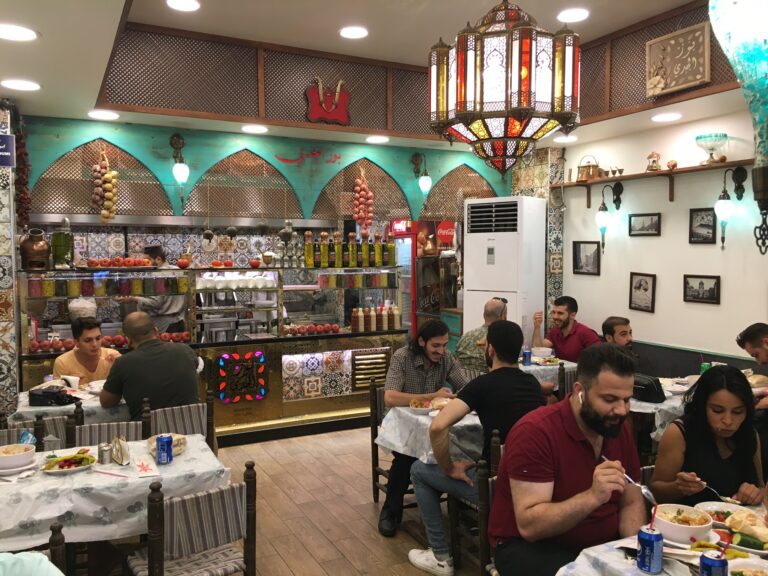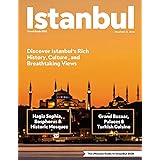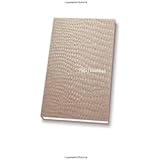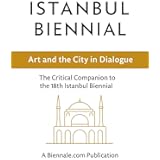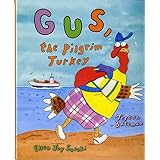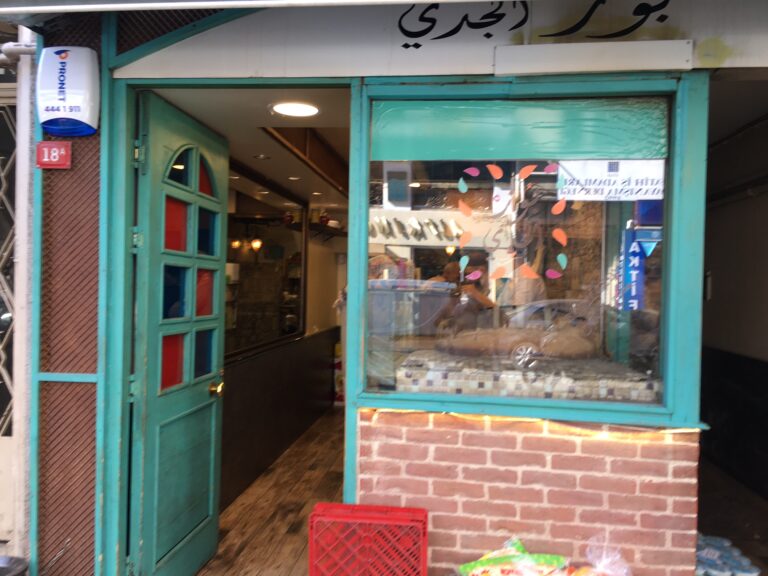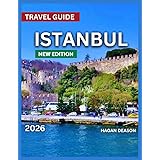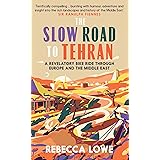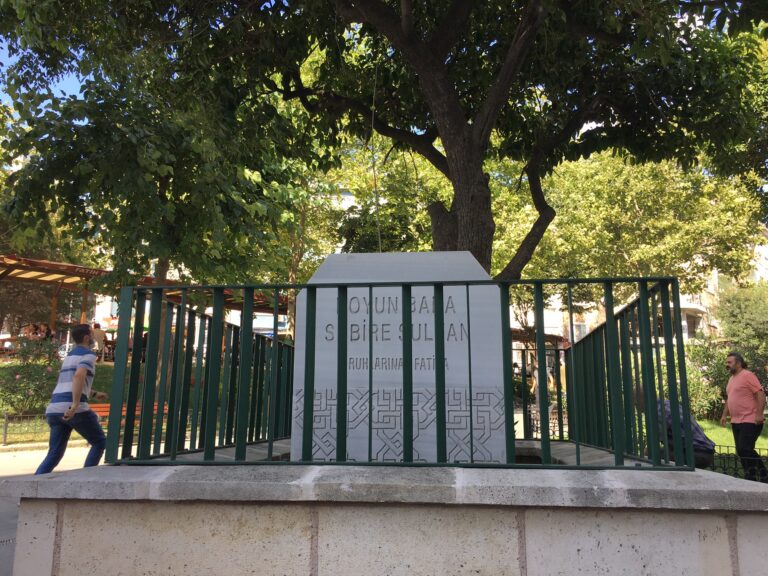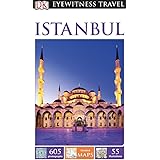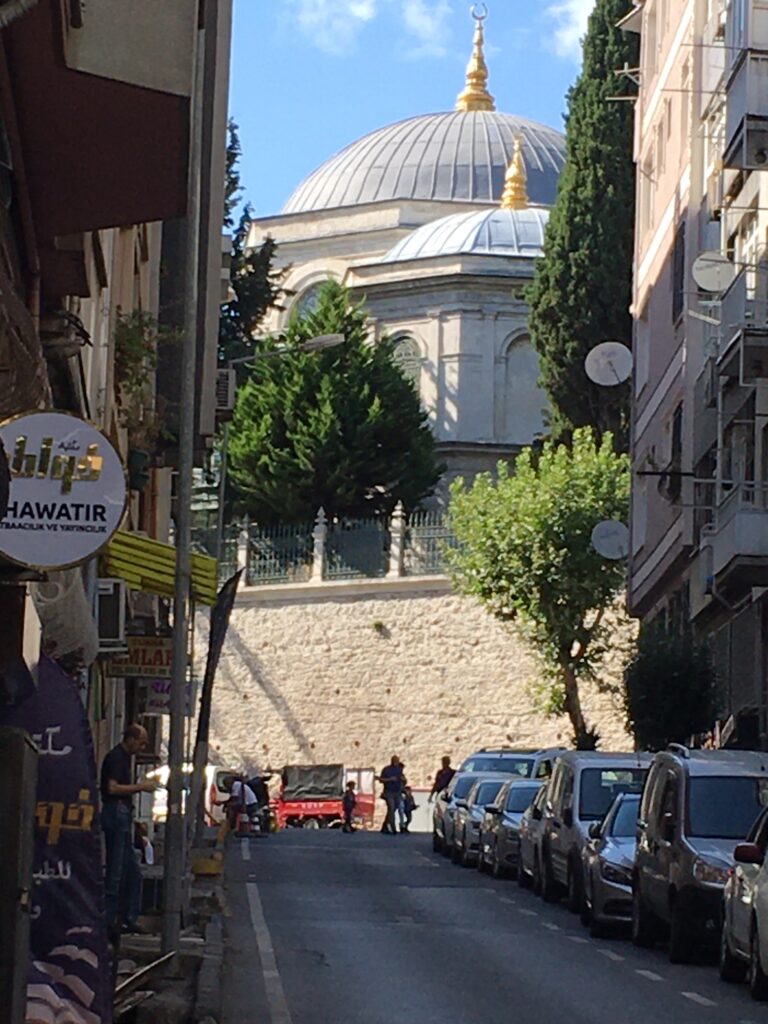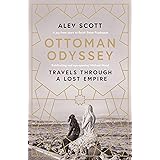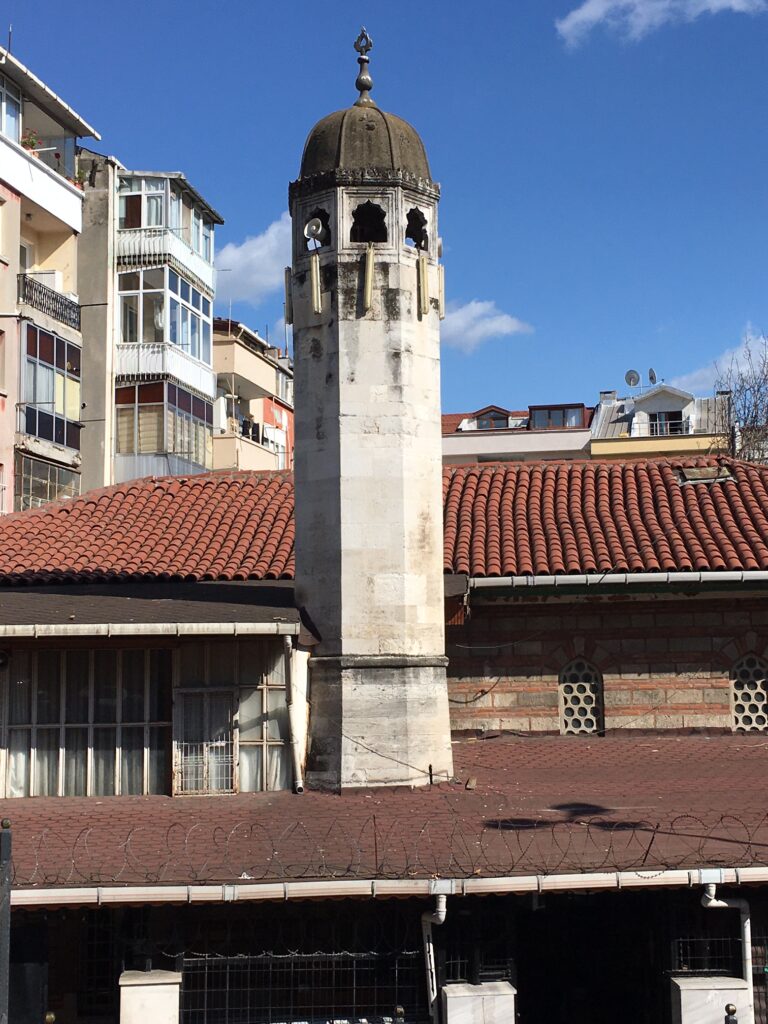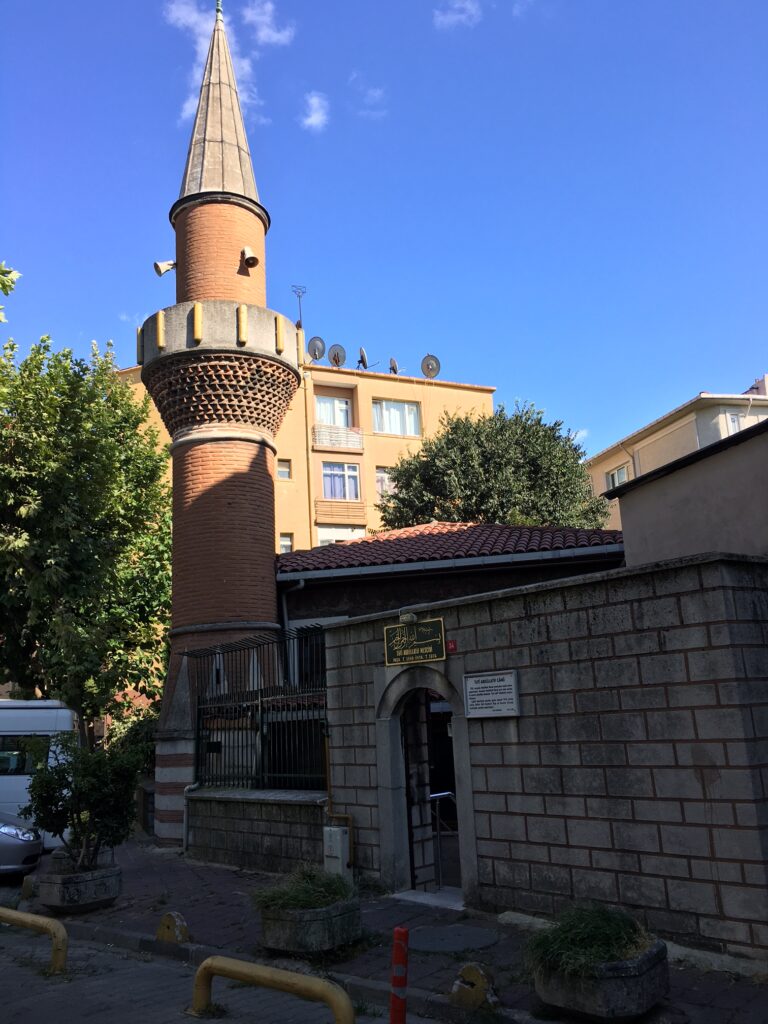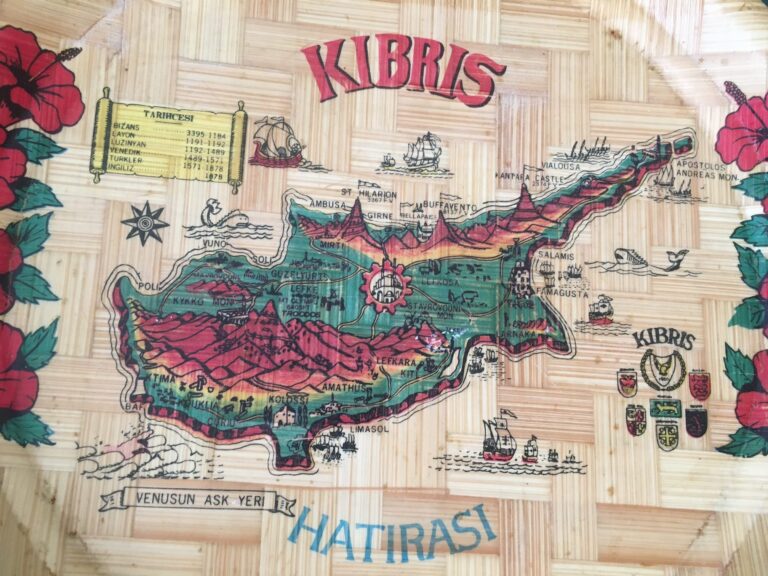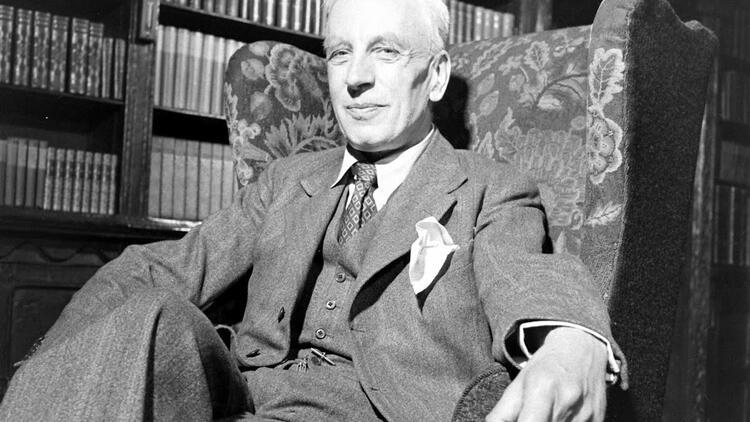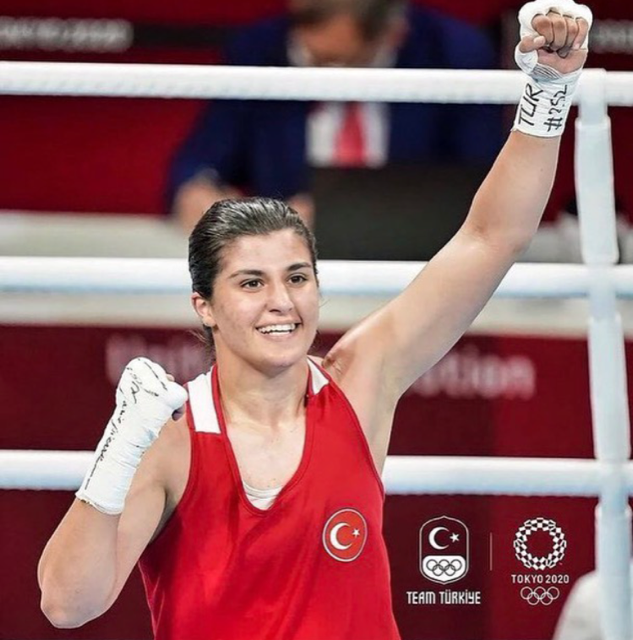Medi&Mena Restaurants, Akşemsettin. Fatih, Istanbul
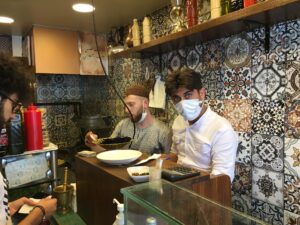


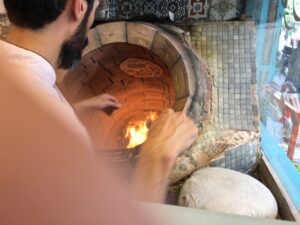
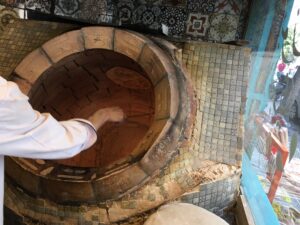

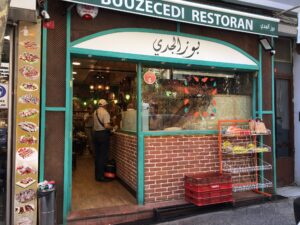
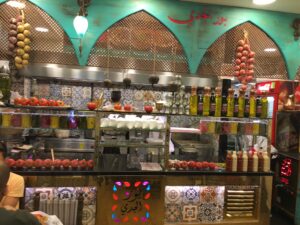

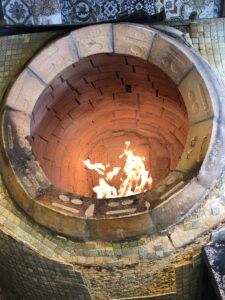
ISTANBUL TRAVEL GUIDE 2026 (Full-Color): From Hagia Sophia to the Spice Bazaar, Bosphorus to Topkapi Palace, Experience the History, Food, Art, Shopping, Nightlife and Adventures of This Timeless City
$14.99 (as of 01/11/2025 03:50 GMT +03:00 - More infoProduct prices and availability are accurate as of the date/time indicated and are subject to change. Any price and availability information displayed on [relevant Amazon Site(s), as applicable] at the time of purchase will apply to the purchase of this product.)Istanbul Travel Guide: Captivating Adventures Through Ottoman Splendor, Byzantine Wonders, Turkish Landmarks, Hidden Gems, and More
$26.39 (as of 01/11/2025 03:50 GMT +03:00 - More infoProduct prices and availability are accurate as of the date/time indicated and are subject to change. Any price and availability information displayed on [relevant Amazon Site(s), as applicable] at the time of purchase will apply to the purchase of this product.)It's not about the Kilometres: Black and white edition
$15.00 (as of 01/11/2025 03:50 GMT +03:00 - More infoProduct prices and availability are accurate as of the date/time indicated and are subject to change. Any price and availability information displayed on [relevant Amazon Site(s), as applicable] at the time of purchase will apply to the purchase of this product.)Türkiye (Turkey) Marco Polo Map
$14.99 (as of 01/11/2025 03:50 GMT +03:00 - More infoProduct prices and availability are accurate as of the date/time indicated and are subject to change. Any price and availability information displayed on [relevant Amazon Site(s), as applicable] at the time of purchase will apply to the purchase of this product.)Pocket Rough Guide Istanbul: Travel Guide with eBook (Pocket Rough Guides)
$7.16 (as of 01/11/2025 03:50 GMT +03:00 - More infoProduct prices and availability are accurate as of the date/time indicated and are subject to change. Any price and availability information displayed on [relevant Amazon Site(s), as applicable] at the time of purchase will apply to the purchase of this product.)Lonely Planet Pocket Istanbul (Pocket Guide)
$3.38 (as of 01/11/2025 03:50 GMT +03:00 - More infoProduct prices and availability are accurate as of the date/time indicated and are subject to change. Any price and availability information displayed on [relevant Amazon Site(s), as applicable] at the time of purchase will apply to the purchase of this product.)A Hedonist's Guide to Istanbul
$22.16 (as of 01/11/2025 03:50 GMT +03:00 - More infoProduct prices and availability are accurate as of the date/time indicated and are subject to change. Any price and availability information displayed on [relevant Amazon Site(s), as applicable] at the time of purchase will apply to the purchase of this product.)The Turkish Cookbook
$40.48 (as of 01/11/2025 03:50 GMT +03:00 - More infoProduct prices and availability are accurate as of the date/time indicated and are subject to change. Any price and availability information displayed on [relevant Amazon Site(s), as applicable] at the time of purchase will apply to the purchase of this product.)Rick Steves Istanbul: With Ephesus & Cappadocia
$14.27 (as of 01/11/2025 03:50 GMT +03:00 - More infoProduct prices and availability are accurate as of the date/time indicated and are subject to change. Any price and availability information displayed on [relevant Amazon Site(s), as applicable] at the time of purchase will apply to the purchase of this product.)Lonely Planet Istanbul (Travel Guide)
$13.19 (as of 01/11/2025 03:50 GMT +03:00 - More infoProduct prices and availability are accurate as of the date/time indicated and are subject to change. Any price and availability information displayed on [relevant Amazon Site(s), as applicable] at the time of purchase will apply to the purchase of this product.)Istanbul: City of Majesty at the Crossroads of the World
$5.98 (as of 02/11/2025 04:11 GMT +03:00 - More infoProduct prices and availability are accurate as of the date/time indicated and are subject to change. Any price and availability information displayed on [relevant Amazon Site(s), as applicable] at the time of purchase will apply to the purchase of this product.)Lonely Planet Turkey (Travel Guide)
$24.99 (as of 02/11/2025 04:11 GMT +03:00 - More infoProduct prices and availability are accurate as of the date/time indicated and are subject to change. Any price and availability information displayed on [relevant Amazon Site(s), as applicable] at the time of purchase will apply to the purchase of this product.)Rick Steves Istanbul: With Ephesus & Cappadocia
$14.26 (as of 02/11/2025 04:11 GMT +03:00 - More infoProduct prices and availability are accurate as of the date/time indicated and are subject to change. Any price and availability information displayed on [relevant Amazon Site(s), as applicable] at the time of purchase will apply to the purchase of this product.)Istanbul: Memories and the City
$1.30 (as of 02/11/2025 04:11 GMT +03:00 - More infoProduct prices and availability are accurate as of the date/time indicated and are subject to change. Any price and availability information displayed on [relevant Amazon Site(s), as applicable] at the time of purchase will apply to the purchase of this product.)Istanbul Biennial: Art and the City in Dialogue: The Critical Companion to the 18th Istanbul Biennial (The Critical Companion Series: Art and Travel Guides ... - Biennale.com Publications Book 2)
$9.99 (as of 02/11/2025 04:11 GMT +03:00 - More infoProduct prices and availability are accurate as of the date/time indicated and are subject to change. Any price and availability information displayed on [relevant Amazon Site(s), as applicable] at the time of purchase will apply to the purchase of this product.)The Turkish Cookbook
$40.48 (as of 02/11/2025 04:11 GMT +03:00 - More infoProduct prices and availability are accurate as of the date/time indicated and are subject to change. Any price and availability information displayed on [relevant Amazon Site(s), as applicable] at the time of purchase will apply to the purchase of this product.)Istanbul: The Imperial City
$12.99 (as of 02/11/2025 04:11 GMT +03:00 - More infoProduct prices and availability are accurate as of the date/time indicated and are subject to change. Any price and availability information displayed on [relevant Amazon Site(s), as applicable] at the time of purchase will apply to the purchase of this product.)Gus, the Pilgrim Turkey
$2.25 (as of 02/11/2025 04:11 GMT +03:00 - More infoProduct prices and availability are accurate as of the date/time indicated and are subject to change. Any price and availability information displayed on [relevant Amazon Site(s), as applicable] at the time of purchase will apply to the purchase of this product.)Istanbul For First Timers: A Local's Travel Guide To Turkiye's Hidden Gems and Culture
$2.99 (as of 02/11/2025 04:11 GMT +03:00 - More infoProduct prices and availability are accurate as of the date/time indicated and are subject to change. Any price and availability information displayed on [relevant Amazon Site(s), as applicable] at the time of purchase will apply to the purchase of this product.)Collins Turkish Phrasebook and Dictionary Gem Edition (Collins Gem)
$0.99 (as of 02/11/2025 04:11 GMT +03:00 - More infoProduct prices and availability are accurate as of the date/time indicated and are subject to change. Any price and availability information displayed on [relevant Amazon Site(s), as applicable] at the time of purchase will apply to the purchase of this product.)Mediterranean&Mena Tastes in Istanbul
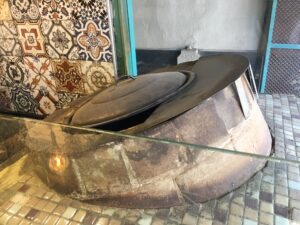
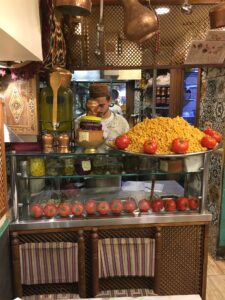


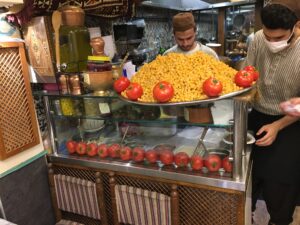
Istanbul in 3 Days| Travel Guide 2025| 3 days plan, local tips, Photos and Online Maps: What to do in Istanbul|where to stay|top restaurants|food guide|day trips|Google maps with best spots.
$4.99 (as of 01/11/2025 03:50 GMT +03:00 - More infoProduct prices and availability are accurate as of the date/time indicated and are subject to change. Any price and availability information displayed on [relevant Amazon Site(s), as applicable] at the time of purchase will apply to the purchase of this product.)Rick Steves Istanbul: With Ephesus & Cappadocia
$14.27 (as of 01/11/2025 03:50 GMT +03:00 - More infoProduct prices and availability are accurate as of the date/time indicated and are subject to change. Any price and availability information displayed on [relevant Amazon Site(s), as applicable] at the time of purchase will apply to the purchase of this product.)Istanbul Travel Guide: Captivating Adventures Through Ottoman Splendor, Byzantine Wonders, Turkish Landmarks, Hidden Gems, and More
$26.39 (as of 01/11/2025 03:50 GMT +03:00 - More infoProduct prices and availability are accurate as of the date/time indicated and are subject to change. Any price and availability information displayed on [relevant Amazon Site(s), as applicable] at the time of purchase will apply to the purchase of this product.)To the City: Life and Death Along the Ancient Walls of Istanbul
$2.39 (as of 01/11/2025 03:50 GMT +03:00 - More infoProduct prices and availability are accurate as of the date/time indicated and are subject to change. Any price and availability information displayed on [relevant Amazon Site(s), as applicable] at the time of purchase will apply to the purchase of this product.)The Rough Guide to Turkey (Travel Guide with eBook) (Rough Guide Main Series)
$13.24 (as of 01/11/2025 03:50 GMT +03:00 - More infoProduct prices and availability are accurate as of the date/time indicated and are subject to change. Any price and availability information displayed on [relevant Amazon Site(s), as applicable] at the time of purchase will apply to the purchase of this product.)Istanbul Travel Guide 2026: Top Places to Visit, Things to Do, Exploring Neighborhood, Itineraries, Festivals and Events, Food and Drink, Shopping, ... History And Culture. (EXPLORE THE GLOBE)
$13.99 (as of 01/11/2025 03:50 GMT +03:00 - More infoProduct prices and availability are accurate as of the date/time indicated and are subject to change. Any price and availability information displayed on [relevant Amazon Site(s), as applicable] at the time of purchase will apply to the purchase of this product.)Lonely Planet Istanbul (Travel Guide)
$13.19 (as of 01/11/2025 03:50 GMT +03:00 - More infoProduct prices and availability are accurate as of the date/time indicated and are subject to change. Any price and availability information displayed on [relevant Amazon Site(s), as applicable] at the time of purchase will apply to the purchase of this product.)The Turkish Cookbook
$40.48 (as of 01/11/2025 03:50 GMT +03:00 - More infoProduct prices and availability are accurate as of the date/time indicated and are subject to change. Any price and availability information displayed on [relevant Amazon Site(s), as applicable] at the time of purchase will apply to the purchase of this product.)The Mini Rough Guide to Istanbul and the Aegean Coast: Travel Guide with eBook
$10.35 (as of 01/11/2025 03:50 GMT +03:00 - More infoProduct prices and availability are accurate as of the date/time indicated and are subject to change. Any price and availability information displayed on [relevant Amazon Site(s), as applicable] at the time of purchase will apply to the purchase of this product.)The 500 Hidden Secrets of Istanbul
$17.20 (as of 01/11/2025 03:50 GMT +03:00 - More infoProduct prices and availability are accurate as of the date/time indicated and are subject to change. Any price and availability information displayed on [relevant Amazon Site(s), as applicable] at the time of purchase will apply to the purchase of this product.)The Amazing Mrs. Pollifax (Mrs. Pollifax Series Book 2)
$5.99 (as of 02/11/2025 04:11 GMT +03:00 - More infoProduct prices and availability are accurate as of the date/time indicated and are subject to change. Any price and availability information displayed on [relevant Amazon Site(s), as applicable] at the time of purchase will apply to the purchase of this product.)Istanbul: City of Majesty at the Crossroads of the World
$5.98 (as of 02/11/2025 04:11 GMT +03:00 - More infoProduct prices and availability are accurate as of the date/time indicated and are subject to change. Any price and availability information displayed on [relevant Amazon Site(s), as applicable] at the time of purchase will apply to the purchase of this product.)Lonely Planet Pocket Istanbul (Pocket Guide)
$12.12 (as of 02/11/2025 04:11 GMT +03:00 - More infoProduct prices and availability are accurate as of the date/time indicated and are subject to change. Any price and availability information displayed on [relevant Amazon Site(s), as applicable] at the time of purchase will apply to the purchase of this product.)Istanbul Biennial: Art and the City in Dialogue: The Critical Companion to the 18th Istanbul Biennial (The Critical Companion Series: Art and Travel Guides ... - Biennale.com Publications Book 2)
$9.99 (as of 02/11/2025 04:11 GMT +03:00 - More infoProduct prices and availability are accurate as of the date/time indicated and are subject to change. Any price and availability information displayed on [relevant Amazon Site(s), as applicable] at the time of purchase will apply to the purchase of this product.)Pocket Rough Guide Istanbul: Travel Guide with eBook (Pocket Rough Guides)
$6.96 (as of 02/11/2025 04:11 GMT +03:00 - More infoProduct prices and availability are accurate as of the date/time indicated and are subject to change. Any price and availability information displayed on [relevant Amazon Site(s), as applicable] at the time of purchase will apply to the purchase of this product.)Istanbul For First Timers: A Local's Travel Guide To Turkiye's Hidden Gems and Culture
$2.99 (as of 02/11/2025 04:11 GMT +03:00 - More infoProduct prices and availability are accurate as of the date/time indicated and are subject to change. Any price and availability information displayed on [relevant Amazon Site(s), as applicable] at the time of purchase will apply to the purchase of this product.)Lonely Planet Turkiye (Travel Guide)
$19.21 (as of 02/11/2025 04:11 GMT +03:00 - More infoProduct prices and availability are accurate as of the date/time indicated and are subject to change. Any price and availability information displayed on [relevant Amazon Site(s), as applicable] at the time of purchase will apply to the purchase of this product.)Lonely Planet Istanbul (Travel Guide)
$13.19 (as of 02/11/2025 04:11 GMT +03:00 - More infoProduct prices and availability are accurate as of the date/time indicated and are subject to change. Any price and availability information displayed on [relevant Amazon Site(s), as applicable] at the time of purchase will apply to the purchase of this product.)The Slow Road to Tehran: A Revelatory Bike Ride through Europe and the Middle East
$7.21 (as of 02/11/2025 04:11 GMT +03:00 - More infoProduct prices and availability are accurate as of the date/time indicated and are subject to change. Any price and availability information displayed on [relevant Amazon Site(s), as applicable] at the time of purchase will apply to the purchase of this product.)Istanbul in 3 Days| Travel Guide 2025| 3 days plan, local tips, Photos and Online Maps: What to do in Istanbul|where to stay|top restaurants|food guide|day trips|Google maps with best spots.
$4.99 (as of 02/11/2025 04:11 GMT +03:00 - More infoProduct prices and availability are accurate as of the date/time indicated and are subject to change. Any price and availability information displayed on [relevant Amazon Site(s), as applicable] at the time of purchase will apply to the purchase of this product.)Koyun Baba Tomb, Akşemsettin, Fatih, Istanbul
The real name of Koyun Baba, who was once one of the most visited Istanbul parents, is unknown. According to rumors, he was one of the saints of Khorasan and one of the shepherds of Fatih Sultan Mehmed.
Sheep Baba’s tomb
Mubarak tomb is located in Fatih, Akşemseddin District, on Sarıgüzel Street, right next to Koyun Baba Park. He was one of the privates who participated in the conquest of Istanbul and later became the shepherd of Fatih Sultan Mehmed. In the past, the grave of Koyun Baba was visited for the naughty children to settle down. Ord. prof. Dr. According to the information provided by Ahmed Süheyl Ünver, in 1935 there was the following inscription on a round stone on his grave:
Bende-i Âli Abâ
The deceased Sheep-Father
His Excellency
Ruhiycun al-Fatiha
This stone does not exist today. Today, there are the following inscriptions in his tomb, which is surrounded by marble and green iron railings:
Sheep Dad
and Sabire Sultan
Fatiha for your soul
Pocket Rough Guide Istanbul: Travel Guide with eBook (Pocket Rough Guides)
$7.16 (as of 01/11/2025 03:50 GMT +03:00 - More infoProduct prices and availability are accurate as of the date/time indicated and are subject to change. Any price and availability information displayed on [relevant Amazon Site(s), as applicable] at the time of purchase will apply to the purchase of this product.)Blue Guide Istanbul: Sixth Edition (Travel Series)
$6.59 (as of 01/11/2025 03:50 GMT +03:00 - More infoProduct prices and availability are accurate as of the date/time indicated and are subject to change. Any price and availability information displayed on [relevant Amazon Site(s), as applicable] at the time of purchase will apply to the purchase of this product.)The Rough Guide to Turkey (Travel Guide with eBook) (Rough Guide Main Series)
$13.24 (as of 01/11/2025 03:50 GMT +03:00 - More infoProduct prices and availability are accurate as of the date/time indicated and are subject to change. Any price and availability information displayed on [relevant Amazon Site(s), as applicable] at the time of purchase will apply to the purchase of this product.)Istanbul Travel Guide: Captivating Adventures Through Ottoman Splendor, Byzantine Wonders, Turkish Landmarks, Hidden Gems, and More
$26.39 (as of 01/11/2025 03:50 GMT +03:00 - More infoProduct prices and availability are accurate as of the date/time indicated and are subject to change. Any price and availability information displayed on [relevant Amazon Site(s), as applicable] at the time of purchase will apply to the purchase of this product.)Lonely Planet Pocket Istanbul (Pocket Guide)
$12.12 (as of 01/11/2025 03:50 GMT +03:00 - More infoProduct prices and availability are accurate as of the date/time indicated and are subject to change. Any price and availability information displayed on [relevant Amazon Site(s), as applicable] at the time of purchase will apply to the purchase of this product.)The Mini Rough Guide to Istanbul and the Aegean Coast: Travel Guide with eBook
$10.35 (as of 01/11/2025 03:50 GMT +03:00 - More infoProduct prices and availability are accurate as of the date/time indicated and are subject to change. Any price and availability information displayed on [relevant Amazon Site(s), as applicable] at the time of purchase will apply to the purchase of this product.)Türkiye (Turkey) Marco Polo Map
$14.99 (as of 01/11/2025 03:50 GMT +03:00 - More infoProduct prices and availability are accurate as of the date/time indicated and are subject to change. Any price and availability information displayed on [relevant Amazon Site(s), as applicable] at the time of purchase will apply to the purchase of this product.)DK Eyewitness Travel Guide: Istanbul
$1.55 (as of 01/11/2025 03:50 GMT +03:00 - More infoProduct prices and availability are accurate as of the date/time indicated and are subject to change. Any price and availability information displayed on [relevant Amazon Site(s), as applicable] at the time of purchase will apply to the purchase of this product.)Istanbul Travel Guide 2024-2025: A Journey Through Time and Empires: A Deep Dive into the Cultural, Culinary, and Architectural Heritage of Turkey's Historic City (MUST-VISIT PLACES IN 2025 Book 13)
$0.99 (as of 01/11/2025 03:50 GMT +03:00 - More infoProduct prices and availability are accurate as of the date/time indicated and are subject to change. Any price and availability information displayed on [relevant Amazon Site(s), as applicable] at the time of purchase will apply to the purchase of this product.)The Turkish Cookbook
$40.48 (as of 01/11/2025 03:50 GMT +03:00 - More infoProduct prices and availability are accurate as of the date/time indicated and are subject to change. Any price and availability information displayed on [relevant Amazon Site(s), as applicable] at the time of purchase will apply to the purchase of this product.)Istanbul Travel Guide 2026: Top Places to Visit, Things to Do, Exploring Neighborhood, Itineraries, Festivals and Events, Food and Drink, Shopping, ... History And Culture. (EXPLORE THE GLOBE)
$13.99 (as of 02/11/2025 04:11 GMT +03:00 - More infoProduct prices and availability are accurate as of the date/time indicated and are subject to change. Any price and availability information displayed on [relevant Amazon Site(s), as applicable] at the time of purchase will apply to the purchase of this product.)Following Miss Bell: Travels Around Turkey in the Footsteps of Gertrude Bell
$5.58 (as of 02/11/2025 04:11 GMT +03:00 - More infoProduct prices and availability are accurate as of the date/time indicated and are subject to change. Any price and availability information displayed on [relevant Amazon Site(s), as applicable] at the time of purchase will apply to the purchase of this product.)Istanbul in 3 Days| Travel Guide 2025| 3 days plan, local tips, Photos and Online Maps: What to do in Istanbul|where to stay|top restaurants|food guide|day trips|Google maps with best spots.
$4.99 (as of 02/11/2025 04:11 GMT +03:00 - More infoProduct prices and availability are accurate as of the date/time indicated and are subject to change. Any price and availability information displayed on [relevant Amazon Site(s), as applicable] at the time of purchase will apply to the purchase of this product.)Istanbul For First Timers: A Local's Travel Guide To Turkiye's Hidden Gems and Culture
$2.99 (as of 02/11/2025 04:11 GMT +03:00 - More infoProduct prices and availability are accurate as of the date/time indicated and are subject to change. Any price and availability information displayed on [relevant Amazon Site(s), as applicable] at the time of purchase will apply to the purchase of this product.)Collins Turkish Phrasebook and Dictionary Gem Edition (Collins Gem)
$0.99 (as of 02/11/2025 04:11 GMT +03:00 - More infoProduct prices and availability are accurate as of the date/time indicated and are subject to change. Any price and availability information displayed on [relevant Amazon Site(s), as applicable] at the time of purchase will apply to the purchase of this product.)Istanbul: The Imperial City
$12.99 (as of 02/11/2025 04:11 GMT +03:00 - More infoProduct prices and availability are accurate as of the date/time indicated and are subject to change. Any price and availability information displayed on [relevant Amazon Site(s), as applicable] at the time of purchase will apply to the purchase of this product.)Fodor's Essential Turkey (Full-color Travel Guide)
$17.99 (as of 02/11/2025 04:11 GMT +03:00 - More infoProduct prices and availability are accurate as of the date/time indicated and are subject to change. Any price and availability information displayed on [relevant Amazon Site(s), as applicable] at the time of purchase will apply to the purchase of this product.)Lonely Planet Istanbul (Travel Guide)
$13.19 (as of 02/11/2025 04:11 GMT +03:00 - More infoProduct prices and availability are accurate as of the date/time indicated and are subject to change. Any price and availability information displayed on [relevant Amazon Site(s), as applicable] at the time of purchase will apply to the purchase of this product.)The Slow Road to Tehran: A Revelatory Bike Ride through Europe and the Middle East
$7.21 (as of 02/11/2025 04:11 GMT +03:00 - More infoProduct prices and availability are accurate as of the date/time indicated and are subject to change. Any price and availability information displayed on [relevant Amazon Site(s), as applicable] at the time of purchase will apply to the purchase of this product.)DK Top 10 Istanbul (Pocket Travel Guide)
$11.40 (as of 02/11/2025 04:11 GMT +03:00 - More infoProduct prices and availability are accurate as of the date/time indicated and are subject to change. Any price and availability information displayed on [relevant Amazon Site(s), as applicable] at the time of purchase will apply to the purchase of this product.)Hırka-i Şerif Mosque, Fatih, Istanbul
Architect(s) Seyyid Abdulhalim Efendi (Hassa Architect)
Construction start 1847
Completion 1851
Features
Number of domes One
Number of minarets 2 minarets with one balcony
Materials Cut limestone
Hırka-ı Şerif Mosque is a mosque built in 1851, located in the Hırkaişerif Neighborhood, which it gave its name, within the borders of Atikali district in Fatih District of Istanbul.
It was built by Sultan Abdülmecid for the preservation and visit of the cardigan (Hırka-ı Şerif) that the Islamic prophet Muhammad gifted to Veysel Karani. This mosque has a very important place in the religious folklore of Istanbul, as it is the place where the Hırka-ı Şerif is kept.
After Veysal Karani’s death, Hırka-ı Şerif, which remained in the hands of the Üveysi dynasty, was brought to Istanbul in the early 17th century by Şükrullah Üveysi, the head of the family at that time, in accordance with the edict of Ahmed I. It is known that the Üveysi family, who settled in Istanbul, had a masonry cell and a fountain and soup kitchen built next to it by the Grand Vizier Çorlulu Ali Pasha for the protection of the cardigan, which was visited in their house in the Fatih district, and then a foundation was established for the first time in 1725 during the time of Sheikh Osman Üveysi.
As the building was insufficient for visits, Abdulhamid I had the cell in the courtyard of the mosque built in 1780, which is now called the “Small Cardigan-i Sharif Office” or “Old Cardigan-i Sharif Chamber”. II. When the cell, which was renovated by Mahmud in 1812, became insufficient in time, the Hırka-ı Şerif Mosque was built during the reign of Sultan Abdülmecit. The construction, which started in 1847 after the surrounding buildings were expropriated and demolished, was completed in 1851.
For Love and the Sea: A memoir of extraordinary travel in the 1960s
$15.99 (as of 01/11/2025 03:50 GMT +03:00 - More infoProduct prices and availability are accurate as of the date/time indicated and are subject to change. Any price and availability information displayed on [relevant Amazon Site(s), as applicable] at the time of purchase will apply to the purchase of this product.)To the City: Life and Death Along the Ancient Walls of Istanbul
$2.39 (as of 01/11/2025 03:50 GMT +03:00 - More infoProduct prices and availability are accurate as of the date/time indicated and are subject to change. Any price and availability information displayed on [relevant Amazon Site(s), as applicable] at the time of purchase will apply to the purchase of this product.)It's not about the Kilometres: Black and white edition
$15.00 (as of 01/11/2025 03:50 GMT +03:00 - More infoProduct prices and availability are accurate as of the date/time indicated and are subject to change. Any price and availability information displayed on [relevant Amazon Site(s), as applicable] at the time of purchase will apply to the purchase of this product.)DK Top 10 Istanbul (Pocket Travel Guide)
$11.40 (as of 01/11/2025 03:50 GMT +03:00 - More infoProduct prices and availability are accurate as of the date/time indicated and are subject to change. Any price and availability information displayed on [relevant Amazon Site(s), as applicable] at the time of purchase will apply to the purchase of this product.)The Turkish Cookbook
$40.48 (as of 01/11/2025 03:50 GMT +03:00 - More infoProduct prices and availability are accurate as of the date/time indicated and are subject to change. Any price and availability information displayed on [relevant Amazon Site(s), as applicable] at the time of purchase will apply to the purchase of this product.)Ottoman Odyssey: Travels through a Lost Empire: Shortlisted for the Stanford Dolman Travel Book of the Year Award
$3.28 (as of 01/11/2025 03:50 GMT +03:00 - More infoProduct prices and availability are accurate as of the date/time indicated and are subject to change. Any price and availability information displayed on [relevant Amazon Site(s), as applicable] at the time of purchase will apply to the purchase of this product.)Istanbul Travel Guide 2026: Top Places to Visit, Things to Do, Exploring Neighborhood, Itineraries, Festivals and Events, Food and Drink, Shopping, ... History And Culture. (EXPLORE THE GLOBE)
$13.99 (as of 01/11/2025 03:50 GMT +03:00 - More infoProduct prices and availability are accurate as of the date/time indicated and are subject to change. Any price and availability information displayed on [relevant Amazon Site(s), as applicable] at the time of purchase will apply to the purchase of this product.)Lonely Planet Pocket Istanbul (Pocket Guide)
$12.12 (as of 01/11/2025 03:50 GMT +03:00 - More infoProduct prices and availability are accurate as of the date/time indicated and are subject to change. Any price and availability information displayed on [relevant Amazon Site(s), as applicable] at the time of purchase will apply to the purchase of this product.)A Hedonist's Guide to Istanbul
$22.16 (as of 01/11/2025 03:50 GMT +03:00 - More infoProduct prices and availability are accurate as of the date/time indicated and are subject to change. Any price and availability information displayed on [relevant Amazon Site(s), as applicable] at the time of purchase will apply to the purchase of this product.)The 500 Hidden Secrets of Istanbul
$17.20 (as of 01/11/2025 03:50 GMT +03:00 - More infoProduct prices and availability are accurate as of the date/time indicated and are subject to change. Any price and availability information displayed on [relevant Amazon Site(s), as applicable] at the time of purchase will apply to the purchase of this product.)The Turkish Cookbook
$40.48 (as of 02/11/2025 04:11 GMT +03:00 - More infoProduct prices and availability are accurate as of the date/time indicated and are subject to change. Any price and availability information displayed on [relevant Amazon Site(s), as applicable] at the time of purchase will apply to the purchase of this product.)Istanbul: On the Road Architecture Guides
$18.49 (as of 02/11/2025 04:11 GMT +03:00 - More infoProduct prices and availability are accurate as of the date/time indicated and are subject to change. Any price and availability information displayed on [relevant Amazon Site(s), as applicable] at the time of purchase will apply to the purchase of this product.)Lonely Planet Turkey (Travel Guide)
$24.99 (as of 02/11/2025 04:11 GMT +03:00 - More infoProduct prices and availability are accurate as of the date/time indicated and are subject to change. Any price and availability information displayed on [relevant Amazon Site(s), as applicable] at the time of purchase will apply to the purchase of this product.)Pocket Rough Guide Istanbul: Travel Guide with eBook (Pocket Rough Guides)
$6.96 (as of 02/11/2025 04:11 GMT +03:00 - More infoProduct prices and availability are accurate as of the date/time indicated and are subject to change. Any price and availability information displayed on [relevant Amazon Site(s), as applicable] at the time of purchase will apply to the purchase of this product.)The Slow Road to Tehran: A Revelatory Bike Ride through Europe and the Middle East
$7.21 (as of 02/11/2025 04:11 GMT +03:00 - More infoProduct prices and availability are accurate as of the date/time indicated and are subject to change. Any price and availability information displayed on [relevant Amazon Site(s), as applicable] at the time of purchase will apply to the purchase of this product.)Istanbul Travel Guide 2026: Top Places to Visit, Things to Do, Exploring Neighborhood, Itineraries, Festivals and Events, Food and Drink, Shopping, ... History And Culture. (EXPLORE THE GLOBE)
$13.99 (as of 02/11/2025 04:11 GMT +03:00 - More infoProduct prices and availability are accurate as of the date/time indicated and are subject to change. Any price and availability information displayed on [relevant Amazon Site(s), as applicable] at the time of purchase will apply to the purchase of this product.)Learn Turkish language self-study (level one for beginners) : Learn to read, write, speak and understand Turkish by yourself, even if you are a beginner ... (Mastering Turkish: Step by Step) Book 1)
$4.99 (as of 02/11/2025 04:11 GMT +03:00 - More infoProduct prices and availability are accurate as of the date/time indicated and are subject to change. Any price and availability information displayed on [relevant Amazon Site(s), as applicable] at the time of purchase will apply to the purchase of this product.)Following Miss Bell: Travels Around Turkey in the Footsteps of Gertrude Bell
$5.58 (as of 02/11/2025 04:11 GMT +03:00 - More infoProduct prices and availability are accurate as of the date/time indicated and are subject to change. Any price and availability information displayed on [relevant Amazon Site(s), as applicable] at the time of purchase will apply to the purchase of this product.)The Christian Traveler's Guide to the Holy Land
$17.28 (as of 02/11/2025 04:11 GMT +03:00 - More infoProduct prices and availability are accurate as of the date/time indicated and are subject to change. Any price and availability information displayed on [relevant Amazon Site(s), as applicable] at the time of purchase will apply to the purchase of this product.)Gus, the Pilgrim Turkey
$2.25 (as of 02/11/2025 04:11 GMT +03:00 - More infoProduct prices and availability are accurate as of the date/time indicated and are subject to change. Any price and availability information displayed on [relevant Amazon Site(s), as applicable] at the time of purchase will apply to the purchase of this product.)Mimar Sinan Masjid, Akşemsettin, Fatih
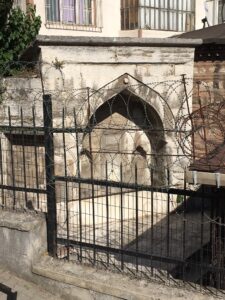
Mimar Sinan Masjid is a mosque located in Fatih.
Named after Mimar Sinan, this masjid is located on the Vatan Avenue side of Akşemseddin Avenue in Fatih district. It is on the left as you descend from Fevzipaşa Street towards Vatan Street.
As of 2011, restoration and landscaping has been done. In 1573, Koca Sinan made it as his own charity. In Tezkiretülbünyan, he describes it as “this is the mosque of the poor”. The courtyard door is between the mosque and the minaret. The mosque, which has walls built with one row of cut stone and two rows of bricks, has a rectangular plan and hipped roof.
The masjid consists of two parts, one open and one closed, for summer and winter. There is a playground next to it. The summer section is the L-shaped narthex. The harim windows are two-storied. The muezzin mahfili is in the north and you can reach the women’s section from here by iron stairs. The lectern is adjacent to the southeast wall and is wooden. The minaret of the mosque is made of limestone, 10 m high, with a mini-domed, octagonal body, and there is a window on each face of the kiosk type minaret.
When the mosque was demolished in or around the 1970s, it was renovated based on the drawings of Turkish architect and restorer Ali Saim Ülgen, the sketch drawn by Cornelius Gurlitt before 1918, and the 1973 excavations.
Istanbul Travel Guide 2026: Top Places to Visit, Things to Do, Exploring Neighborhood, Itineraries, Festivals and Events, Food and Drink, Shopping, ... History And Culture. (EXPLORE THE GLOBE)
$13.99 (as of 01/11/2025 03:50 GMT +03:00 - More infoProduct prices and availability are accurate as of the date/time indicated and are subject to change. Any price and availability information displayed on [relevant Amazon Site(s), as applicable] at the time of purchase will apply to the purchase of this product.)DK Eyewitness Travel Guide: Istanbul
$1.55 (as of 01/11/2025 03:50 GMT +03:00 - More infoProduct prices and availability are accurate as of the date/time indicated and are subject to change. Any price and availability information displayed on [relevant Amazon Site(s), as applicable] at the time of purchase will apply to the purchase of this product.)Blue Guide Istanbul: Sixth Edition (Travel Series)
$6.59 (as of 01/11/2025 03:50 GMT +03:00 - More infoProduct prices and availability are accurate as of the date/time indicated and are subject to change. Any price and availability information displayed on [relevant Amazon Site(s), as applicable] at the time of purchase will apply to the purchase of this product.)Pocket Rough Guide Istanbul: Travel Guide with eBook (Pocket Rough Guides)
$7.16 (as of 01/11/2025 03:50 GMT +03:00 - More infoProduct prices and availability are accurate as of the date/time indicated and are subject to change. Any price and availability information displayed on [relevant Amazon Site(s), as applicable] at the time of purchase will apply to the purchase of this product.)The Mini Rough Guide to Istanbul and the Aegean Coast: Travel Guide with eBook
$10.35 (as of 01/11/2025 03:50 GMT +03:00 - More infoProduct prices and availability are accurate as of the date/time indicated and are subject to change. Any price and availability information displayed on [relevant Amazon Site(s), as applicable] at the time of purchase will apply to the purchase of this product.)Travel Adventures for the Young at Heart: Two high-spirited seniors capture glittering memories and fascinating discoveries in Amsterdam, Barcelona, Venice, Athens, Istanbul and other magical places.
$5.99 (as of 01/11/2025 03:50 GMT +03:00 - More infoProduct prices and availability are accurate as of the date/time indicated and are subject to change. Any price and availability information displayed on [relevant Amazon Site(s), as applicable] at the time of purchase will apply to the purchase of this product.)Istanbul Travel Guide 2025/2026: Sultanahmet, Beyoğlu: Shopping and Nightlife, Kadıköy, Balat and Fener, Markets and Shopping,Hagia Sophia,Must-See ... Galata Tower. (Best Travel Guides 2025)
$11.99 (as of 01/11/2025 03:50 GMT +03:00 - More infoProduct prices and availability are accurate as of the date/time indicated and are subject to change. Any price and availability information displayed on [relevant Amazon Site(s), as applicable] at the time of purchase will apply to the purchase of this product.)Istanbul, City map 1:10.000, City Pocket map + The Big Five
$17.87 (as of 01/11/2025 03:50 GMT +03:00 - More infoProduct prices and availability are accurate as of the date/time indicated and are subject to change. Any price and availability information displayed on [relevant Amazon Site(s), as applicable] at the time of purchase will apply to the purchase of this product.)A Hedonist's Guide to Istanbul
$22.16 (as of 01/11/2025 03:50 GMT +03:00 - More infoProduct prices and availability are accurate as of the date/time indicated and are subject to change. Any price and availability information displayed on [relevant Amazon Site(s), as applicable] at the time of purchase will apply to the purchase of this product.)Rick Steves Istanbul: With Ephesus & Cappadocia
$3.38 (as of 01/11/2025 03:50 GMT +03:00 - More infoProduct prices and availability are accurate as of the date/time indicated and are subject to change. Any price and availability information displayed on [relevant Amazon Site(s), as applicable] at the time of purchase will apply to the purchase of this product.)Istanbul Travel Guide 2025/2026: Sultanahmet, Beyoğlu: Shopping and Nightlife, Kadıköy, Balat and Fener, Markets and Shopping,Hagia Sophia,Must-See Sights,Day ... Galata Tower. (Best Travel Guides 2025)
$3.99 (as of 02/11/2025 04:11 GMT +03:00 - More infoProduct prices and availability are accurate as of the date/time indicated and are subject to change. Any price and availability information displayed on [relevant Amazon Site(s), as applicable] at the time of purchase will apply to the purchase of this product.)Rick Steves Istanbul: With Ephesus & Cappadocia
$14.26 (as of 02/11/2025 04:11 GMT +03:00 - More infoProduct prices and availability are accurate as of the date/time indicated and are subject to change. Any price and availability information displayed on [relevant Amazon Site(s), as applicable] at the time of purchase will apply to the purchase of this product.)DK Top 10 Istanbul (Pocket Travel Guide)
$6.52 (as of 02/11/2025 04:11 GMT +03:00 - More infoProduct prices and availability are accurate as of the date/time indicated and are subject to change. Any price and availability information displayed on [relevant Amazon Site(s), as applicable] at the time of purchase will apply to the purchase of this product.)The Amazing Mrs. Pollifax (Mrs. Pollifax Series Book 2)
$5.99 (as of 02/11/2025 04:11 GMT +03:00 - More infoProduct prices and availability are accurate as of the date/time indicated and are subject to change. Any price and availability information displayed on [relevant Amazon Site(s), as applicable] at the time of purchase will apply to the purchase of this product.)Istanbul Travel Guide 2026: Top Places to Visit, Things to Do, Exploring Neighborhood, Itineraries, Festivals and Events, Food and Drink, Shopping, ... History And Culture. (EXPLORE THE GLOBE)
$13.99 (as of 02/11/2025 04:11 GMT +03:00 - More infoProduct prices and availability are accurate as of the date/time indicated and are subject to change. Any price and availability information displayed on [relevant Amazon Site(s), as applicable] at the time of purchase will apply to the purchase of this product.)Complete Turkish: The Absolute Course for Beginners
$43.49 (as of 02/11/2025 04:11 GMT +03:00 - More infoProduct prices and availability are accurate as of the date/time indicated and are subject to change. Any price and availability information displayed on [relevant Amazon Site(s), as applicable] at the time of purchase will apply to the purchase of this product.)DK Top 10 Istanbul (Pocket Travel Guide)
$11.40 (as of 02/11/2025 04:11 GMT +03:00 - More infoProduct prices and availability are accurate as of the date/time indicated and are subject to change. Any price and availability information displayed on [relevant Amazon Site(s), as applicable] at the time of purchase will apply to the purchase of this product.)Fodor's Essential Turkey (Full-color Travel Guide)
$17.99 (as of 02/11/2025 04:11 GMT +03:00 - More infoProduct prices and availability are accurate as of the date/time indicated and are subject to change. Any price and availability information displayed on [relevant Amazon Site(s), as applicable] at the time of purchase will apply to the purchase of this product.)Istanbul: On the Road Architecture Guides
$18.49 (as of 02/11/2025 04:11 GMT +03:00 - More infoProduct prices and availability are accurate as of the date/time indicated and are subject to change. Any price and availability information displayed on [relevant Amazon Site(s), as applicable] at the time of purchase will apply to the purchase of this product.)The Christian Traveler's Guide to the Holy Land
$17.28 (as of 02/11/2025 04:11 GMT +03:00 - More infoProduct prices and availability are accurate as of the date/time indicated and are subject to change. Any price and availability information displayed on [relevant Amazon Site(s), as applicable] at the time of purchase will apply to the purchase of this product.)Tuti Abdullatif Mosque, Fatih, Akşemsettin. Istanbul
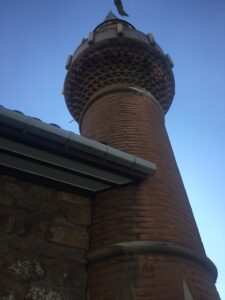

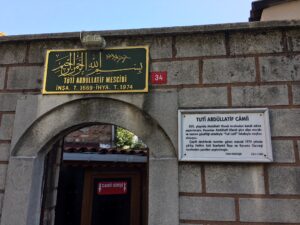

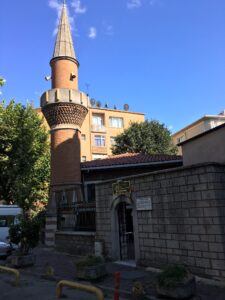
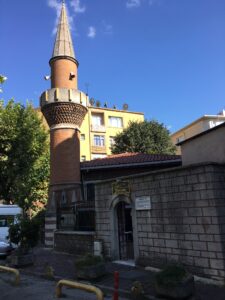
Mimar Sinan District, Fatih. next to Akşemseddin Mosque. It was built by Abdüllâtif Efendi in 1669 in his own name. Kazasker Abdüllâtif Efendi became famous with the nickname Tûti Lâtif due to his interest in poetry and his beautiful voice. The mosque is also known as Tuti Latif Masjid.
The walls of the mosque are made of masonry, the roof is wooden, and the minaret is made of brick. The mosque, whose small courtyard is surrounded by enclosing walls, was repaired in 1944, demolished in 1974 and rebuilt by the Association for the Revival and Protection of the Ancient Artifacts of Fatih.
The Rough Guide to Turkey (Travel Guide with eBook) (Rough Guide Main Series)
$13.24 (as of 01/11/2025 03:50 GMT +03:00 - More infoProduct prices and availability are accurate as of the date/time indicated and are subject to change. Any price and availability information displayed on [relevant Amazon Site(s), as applicable] at the time of purchase will apply to the purchase of this product.)Lonely Planet Istanbul (Travel Guide)
$13.19 (as of 01/11/2025 03:50 GMT +03:00 - More infoProduct prices and availability are accurate as of the date/time indicated and are subject to change. Any price and availability information displayed on [relevant Amazon Site(s), as applicable] at the time of purchase will apply to the purchase of this product.)The Turkish Cookbook
$40.48 (as of 01/11/2025 03:50 GMT +03:00 - More infoProduct prices and availability are accurate as of the date/time indicated and are subject to change. Any price and availability information displayed on [relevant Amazon Site(s), as applicable] at the time of purchase will apply to the purchase of this product.)Picture Book of Istanbul: Largest City in Türkieye and Former Known as Constantinople – See the Blue Mosque, Haga Sofia and More in this city Located ... Europe and Asia (Travel Coffee Table Books)
$9.99 (as of 01/11/2025 03:50 GMT +03:00 - More infoProduct prices and availability are accurate as of the date/time indicated and are subject to change. Any price and availability information displayed on [relevant Amazon Site(s), as applicable] at the time of purchase will apply to the purchase of this product.)Türkiye (Turkey) Marco Polo Map
$14.99 (as of 01/11/2025 03:50 GMT +03:00 - More infoProduct prices and availability are accurate as of the date/time indicated and are subject to change. Any price and availability information displayed on [relevant Amazon Site(s), as applicable] at the time of purchase will apply to the purchase of this product.)Istanbul Travel Guide 2025/2026: Sultanahmet, Beyoğlu: Shopping and Nightlife, Kadıköy, Balat and Fener, Markets and Shopping,Hagia Sophia,Must-See ... Galata Tower. (Best Travel Guides 2025)
$11.99 (as of 01/11/2025 03:50 GMT +03:00 - More infoProduct prices and availability are accurate as of the date/time indicated and are subject to change. Any price and availability information displayed on [relevant Amazon Site(s), as applicable] at the time of purchase will apply to the purchase of this product.)Istanbul Travel Guide: Captivating Adventures Through Ottoman Splendor, Byzantine Wonders, Turkish Landmarks, Hidden Gems, and More
$26.39 (as of 01/11/2025 03:50 GMT +03:00 - More infoProduct prices and availability are accurate as of the date/time indicated and are subject to change. Any price and availability information displayed on [relevant Amazon Site(s), as applicable] at the time of purchase will apply to the purchase of this product.)Lonely Planet Pocket Istanbul (Pocket Guide)
$12.12 (as of 01/11/2025 03:50 GMT +03:00 - More infoProduct prices and availability are accurate as of the date/time indicated and are subject to change. Any price and availability information displayed on [relevant Amazon Site(s), as applicable] at the time of purchase will apply to the purchase of this product.)Travel Adventures for the Young at Heart: Two high-spirited seniors capture glittering memories and fascinating discoveries in Amsterdam, Barcelona, Venice, Athens, Istanbul and other magical places.
$5.99 (as of 01/11/2025 03:50 GMT +03:00 - More infoProduct prices and availability are accurate as of the date/time indicated and are subject to change. Any price and availability information displayed on [relevant Amazon Site(s), as applicable] at the time of purchase will apply to the purchase of this product.)The Mini Rough Guide to Istanbul and the Aegean Coast: Travel Guide with eBook
$10.35 (as of 01/11/2025 03:50 GMT +03:00 - More infoProduct prices and availability are accurate as of the date/time indicated and are subject to change. Any price and availability information displayed on [relevant Amazon Site(s), as applicable] at the time of purchase will apply to the purchase of this product.)Rick Steves Istanbul: With Ephesus & Cappadocia
$14.26 (as of 02/11/2025 04:11 GMT +03:00 - More infoProduct prices and availability are accurate as of the date/time indicated and are subject to change. Any price and availability information displayed on [relevant Amazon Site(s), as applicable] at the time of purchase will apply to the purchase of this product.)The Turkish Cookbook
$40.48 (as of 02/11/2025 04:11 GMT +03:00 - More infoProduct prices and availability are accurate as of the date/time indicated and are subject to change. Any price and availability information displayed on [relevant Amazon Site(s), as applicable] at the time of purchase will apply to the purchase of this product.)Pocket Rough Guide Istanbul: Travel Guide with eBook (Pocket Rough Guides)
$6.96 (as of 02/11/2025 04:11 GMT +03:00 - More infoProduct prices and availability are accurate as of the date/time indicated and are subject to change. Any price and availability information displayed on [relevant Amazon Site(s), as applicable] at the time of purchase will apply to the purchase of this product.)Istanbul Travel Guide 2026: Top Places to Visit, Things to Do, Exploring Neighborhood, Itineraries, Festivals and Events, Food and Drink, Shopping, ... History And Culture. (EXPLORE THE GLOBE)
$13.99 (as of 02/11/2025 04:11 GMT +03:00 - More infoProduct prices and availability are accurate as of the date/time indicated and are subject to change. Any price and availability information displayed on [relevant Amazon Site(s), as applicable] at the time of purchase will apply to the purchase of this product.)Istanbul: On the Road Architecture Guides
$18.49 (as of 02/11/2025 04:11 GMT +03:00 - More infoProduct prices and availability are accurate as of the date/time indicated and are subject to change. Any price and availability information displayed on [relevant Amazon Site(s), as applicable] at the time of purchase will apply to the purchase of this product.)The Christian Traveler's Guide to the Holy Land
$17.28 (as of 02/11/2025 04:11 GMT +03:00 - More infoProduct prices and availability are accurate as of the date/time indicated and are subject to change. Any price and availability information displayed on [relevant Amazon Site(s), as applicable] at the time of purchase will apply to the purchase of this product.)Istanbul: City of Majesty at the Crossroads of the World
$5.98 (as of 02/11/2025 04:11 GMT +03:00 - More infoProduct prices and availability are accurate as of the date/time indicated and are subject to change. Any price and availability information displayed on [relevant Amazon Site(s), as applicable] at the time of purchase will apply to the purchase of this product.)The Amazing Mrs. Pollifax (Mrs. Pollifax Series Book 2)
$5.99 (as of 02/11/2025 04:11 GMT +03:00 - More infoProduct prices and availability are accurate as of the date/time indicated and are subject to change. Any price and availability information displayed on [relevant Amazon Site(s), as applicable] at the time of purchase will apply to the purchase of this product.)Istanbul For First Timers: A Local's Travel Guide To Turkiye's Hidden Gems and Culture
$2.99 (as of 02/11/2025 04:11 GMT +03:00 - More infoProduct prices and availability are accurate as of the date/time indicated and are subject to change. Any price and availability information displayed on [relevant Amazon Site(s), as applicable] at the time of purchase will apply to the purchase of this product.)Lonely Planet Turkiye (Travel Guide)
$19.21 (as of 02/11/2025 04:11 GMT +03:00 - More infoProduct prices and availability are accurate as of the date/time indicated and are subject to change. Any price and availability information displayed on [relevant Amazon Site(s), as applicable] at the time of purchase will apply to the purchase of this product.)Cyprus Memorial
DK Top 10 Istanbul (Pocket Travel Guide)
$11.40 (as of 01/11/2025 03:50 GMT +03:00 - More infoProduct prices and availability are accurate as of the date/time indicated and are subject to change. Any price and availability information displayed on [relevant Amazon Site(s), as applicable] at the time of purchase will apply to the purchase of this product.)Pocket Rough Guide Istanbul: Travel Guide with eBook (Pocket Rough Guides)
$7.16 (as of 01/11/2025 03:50 GMT +03:00 - More infoProduct prices and availability are accurate as of the date/time indicated and are subject to change. Any price and availability information displayed on [relevant Amazon Site(s), as applicable] at the time of purchase will apply to the purchase of this product.)Istanbul Travel Guide 2024-2025: A Journey Through Time and Empires: A Deep Dive into the Cultural, Culinary, and Architectural Heritage of Turkey's Historic City (MUST-VISIT PLACES IN 2025 Book 13)
$0.99 (as of 01/11/2025 03:50 GMT +03:00 - More infoProduct prices and availability are accurate as of the date/time indicated and are subject to change. Any price and availability information displayed on [relevant Amazon Site(s), as applicable] at the time of purchase will apply to the purchase of this product.)The Mini Rough Guide to Istanbul and the Aegean Coast: Travel Guide with eBook
$10.35 (as of 01/11/2025 03:50 GMT +03:00 - More infoProduct prices and availability are accurate as of the date/time indicated and are subject to change. Any price and availability information displayed on [relevant Amazon Site(s), as applicable] at the time of purchase will apply to the purchase of this product.)For Love and the Sea: A memoir of extraordinary travel in the 1960s
$15.99 (as of 01/11/2025 03:50 GMT +03:00 - More infoProduct prices and availability are accurate as of the date/time indicated and are subject to change. Any price and availability information displayed on [relevant Amazon Site(s), as applicable] at the time of purchase will apply to the purchase of this product.)Istanbul, City map 1:10.000, City Pocket map + The Big Five
$17.87 (as of 01/11/2025 03:50 GMT +03:00 - More infoProduct prices and availability are accurate as of the date/time indicated and are subject to change. Any price and availability information displayed on [relevant Amazon Site(s), as applicable] at the time of purchase will apply to the purchase of this product.)Lonely Planet Pocket Istanbul (Pocket Guide)
$12.12 (as of 01/11/2025 03:50 GMT +03:00 - More infoProduct prices and availability are accurate as of the date/time indicated and are subject to change. Any price and availability information displayed on [relevant Amazon Site(s), as applicable] at the time of purchase will apply to the purchase of this product.)Lonely Planet Pocket Istanbul (Pocket Guide)
$3.38 (as of 01/11/2025 03:50 GMT +03:00 - More infoProduct prices and availability are accurate as of the date/time indicated and are subject to change. Any price and availability information displayed on [relevant Amazon Site(s), as applicable] at the time of purchase will apply to the purchase of this product.)The Turkish Cookbook
$40.48 (as of 01/11/2025 03:50 GMT +03:00 - More infoProduct prices and availability are accurate as of the date/time indicated and are subject to change. Any price and availability information displayed on [relevant Amazon Site(s), as applicable] at the time of purchase will apply to the purchase of this product.)It's not about the Kilometres: Black and white edition
$15.00 (as of 01/11/2025 03:50 GMT +03:00 - More infoProduct prices and availability are accurate as of the date/time indicated and are subject to change. Any price and availability information displayed on [relevant Amazon Site(s), as applicable] at the time of purchase will apply to the purchase of this product.)Collins Turkish Phrasebook and Dictionary Gem Edition (Collins Gem)
$0.99 (as of 02/11/2025 04:11 GMT +03:00 - More infoProduct prices and availability are accurate as of the date/time indicated and are subject to change. Any price and availability information displayed on [relevant Amazon Site(s), as applicable] at the time of purchase will apply to the purchase of this product.)Gus, the Pilgrim Turkey
$2.25 (as of 02/11/2025 04:11 GMT +03:00 - More infoProduct prices and availability are accurate as of the date/time indicated and are subject to change. Any price and availability information displayed on [relevant Amazon Site(s), as applicable] at the time of purchase will apply to the purchase of this product.)Fodor's Essential Turkey (Full-color Travel Guide)
$1.61 (as of 02/11/2025 04:11 GMT +03:00 - More infoProduct prices and availability are accurate as of the date/time indicated and are subject to change. Any price and availability information displayed on [relevant Amazon Site(s), as applicable] at the time of purchase will apply to the purchase of this product.)Lonely Planet Turkey (Travel Guide)
$24.99 (as of 02/11/2025 04:11 GMT +03:00 - More infoProduct prices and availability are accurate as of the date/time indicated and are subject to change. Any price and availability information displayed on [relevant Amazon Site(s), as applicable] at the time of purchase will apply to the purchase of this product.)Istanbul: The Imperial City
$12.99 (as of 02/11/2025 04:11 GMT +03:00 - More infoProduct prices and availability are accurate as of the date/time indicated and are subject to change. Any price and availability information displayed on [relevant Amazon Site(s), as applicable] at the time of purchase will apply to the purchase of this product.)Istanbul, City map 1:10.000, City Pocket map + The Big Five
$17.87 (as of 02/11/2025 04:11 GMT +03:00 - More infoProduct prices and availability are accurate as of the date/time indicated and are subject to change. Any price and availability information displayed on [relevant Amazon Site(s), as applicable] at the time of purchase will apply to the purchase of this product.)Istanbul: City of Majesty at the Crossroads of the World
$5.98 (as of 02/11/2025 04:11 GMT +03:00 - More infoProduct prices and availability are accurate as of the date/time indicated and are subject to change. Any price and availability information displayed on [relevant Amazon Site(s), as applicable] at the time of purchase will apply to the purchase of this product.)Istanbul in 3 Days| Travel Guide 2025| 3 days plan, local tips, Photos and Online Maps: What to do in Istanbul|where to stay|top restaurants|food guide|day trips|Google maps with best spots.
$4.99 (as of 02/11/2025 04:11 GMT +03:00 - More infoProduct prices and availability are accurate as of the date/time indicated and are subject to change. Any price and availability information displayed on [relevant Amazon Site(s), as applicable] at the time of purchase will apply to the purchase of this product.)Lonely Planet Turkiye (Travel Guide)
$19.21 (as of 02/11/2025 04:11 GMT +03:00 - More infoProduct prices and availability are accurate as of the date/time indicated and are subject to change. Any price and availability information displayed on [relevant Amazon Site(s), as applicable] at the time of purchase will apply to the purchase of this product.)Istanbul: Memories and the City
$1.30 (as of 02/11/2025 04:11 GMT +03:00 - More infoProduct prices and availability are accurate as of the date/time indicated and are subject to change. Any price and availability information displayed on [relevant Amazon Site(s), as applicable] at the time of purchase will apply to the purchase of this product.)How was the Turkish image of the British shaped?
One of the names discussed in the book is Arnold Joseph Toynbee.
by TALİP ERTÜRK [email protected]
“Turkey in the Eyes of the British 1776-1923” by David S. Katz focuses on the activities of five important figures who contributed to the construction of the Turkish image at a time when the British Empire determined the fate of peoples and geographies. The book also offers an important opportunity to correct some well-known mistakes.
Edward Said, the first name that comes to mind when orientalism is mentioned, in his famous work, expressed the concept of the East in the eyes of Europeans and Americans as “a universe of texts”, a “topos” rather than a geography, a series of references, a collection of features. ‘Turkey through the Eyes of the British 1776-1923’ by David S. Katz is the story of five British intellectuals, historian Edward Gibbon, poet Lord Byron, politician Benjamin Disraeli, novelist John Buchan and historian Arnold Toynbee, who had a very important influence on the idea of the East in the West’s imagination. traces their biographies and their contributions to this ‘text universe’. Many of the faces of this period, in which the world was perceived through races and nations, and it was clearly stated that the ‘sick man’ should be driven out of Europe, visited the Ottoman Empire in person, and these visits often nullified the prejudices acquired at the desk.

The first of these five names, discussed in chronological order by David S. Katz, is Edward Gibbon, who deeply influenced not only historiography but also Western culture in general, with his monumental work ‘History of the Decline and Fall of the Roman Empire’. In the second and third volumes of the work, Gibbon, who revealed the peace of the Eastern Roman Empire since the foundation of Constantinople, could not help but pay special attention to the Turks who brought the Roman Empire to an end. Edward Gibbon’s interpretation of Turkish history, which is full of mistakes and deficiencies, fed from limited resources in Western languages, has cast the mold of the Turkish image, the effects of which continue even today, while embodying all the handicaps of being completely at a desk.
The second name that the book deals with is the famous poet Lord Byron, who is often confused with Greek admiration and Turkish hostility. Byron, who became the symbol of the Greek struggle for independence after his death, went on a ‘grand tour’ that would become a fashion among the European aristocrats of the time, visiting various regions of the Ottoman Empire, and had the chance to personally experience how incomplete and misleading desk information about the East was. is doing. It may be surprising to see that Byron, who stayed in Istanbul for six weeks, had more Turkish fans than Turkish enemies.
Benjamin Disraeli, who is considered one of the most important politicians in the history of the British Empire, encountered a very different world than the one he read in the books on his tour to the East, which he followed in the footsteps of Lord Byron, who had a profound effect on him. It was largely thanks to this visit that Disraeli’s political career and some of his pro-Ottoman ideas that he would defend during his prime ministership were shaped.
The author of the famous novel ’39 Steps’, John Buchan, while engaged in various intelligence activities during World War I, wrote his popular novels as part of the propaganda war. Buchan’s best-selling novel ‘Green Kaftan’ played an important role in establishing the stereotypes about Turkish culture.
Arnold Joseph Toynbee is undoubtedly the most controversial of the names Katz has discussed. Today, no one can pull out the stone that Toynbee, who became a solid cog in the British propaganda machine during World War I, threw into the well with his report “Treatment of Armenians in the Ottoman Empire” written about the internal turmoil in Anatolia. While this report, which would later become popular as the “Blue Book”, formed the basis of the Armenian argument, Toynbee’s opinion about the Turks changed over time and supported the independence struggle by following the War of Independence on the spot.
It is very interesting to see the contrast between the writings of the five names discussed throughout the book and their thoughts. In this respect, ‘Turkey in the Eyes of the British’ offers an important opportunity to correct some well-known misconceptions.
How the Turkish image of the British was shapedIN THE BRITISH EYES
TURKEY 1776-1923
David S Katz
Translated by Nurettin Elhuseyni
Yapı Kredi Publications, 2021
256 pages, 32 TL.
Source: https://www.hurriyet.com.tr/kitap-sanat/ingilizlerin-turk-imaji-nasil-sekillendi-41867377
The Mini Rough Guide to Istanbul and the Aegean Coast: Travel Guide with eBook
$10.35 (as of 01/11/2025 03:50 GMT +03:00 - More infoProduct prices and availability are accurate as of the date/time indicated and are subject to change. Any price and availability information displayed on [relevant Amazon Site(s), as applicable] at the time of purchase will apply to the purchase of this product.)For Love and the Sea: A memoir of extraordinary travel in the 1960s
$15.99 (as of 01/11/2025 03:50 GMT +03:00 - More infoProduct prices and availability are accurate as of the date/time indicated and are subject to change. Any price and availability information displayed on [relevant Amazon Site(s), as applicable] at the time of purchase will apply to the purchase of this product.)Istanbul Travel Guide: Captivating Adventures Through Ottoman Splendor, Byzantine Wonders, Turkish Landmarks, Hidden Gems, and More
$26.39 (as of 01/11/2025 03:50 GMT +03:00 - More infoProduct prices and availability are accurate as of the date/time indicated and are subject to change. Any price and availability information displayed on [relevant Amazon Site(s), as applicable] at the time of purchase will apply to the purchase of this product.)Rick Steves Istanbul: With Ephesus & Cappadocia
$3.38 (as of 01/11/2025 03:50 GMT +03:00 - More infoProduct prices and availability are accurate as of the date/time indicated and are subject to change. Any price and availability information displayed on [relevant Amazon Site(s), as applicable] at the time of purchase will apply to the purchase of this product.)Istanbul Travel Guide 2024-2025: A Journey Through Time and Empires: A Deep Dive into the Cultural, Culinary, and Architectural Heritage of Turkey's Historic City (MUST-VISIT PLACES IN 2025 Book 13)
$0.99 (as of 01/11/2025 03:50 GMT +03:00 - More infoProduct prices and availability are accurate as of the date/time indicated and are subject to change. Any price and availability information displayed on [relevant Amazon Site(s), as applicable] at the time of purchase will apply to the purchase of this product.)The Turkish Cookbook
$40.48 (as of 01/11/2025 03:50 GMT +03:00 - More infoProduct prices and availability are accurate as of the date/time indicated and are subject to change. Any price and availability information displayed on [relevant Amazon Site(s), as applicable] at the time of purchase will apply to the purchase of this product.)Istanbul in 3 Days| Travel Guide 2025| 3 days plan, local tips, Photos and Online Maps: What to do in Istanbul|where to stay|top restaurants|food guide|day trips|Google maps with best spots.
$4.99 (as of 01/11/2025 03:50 GMT +03:00 - More infoProduct prices and availability are accurate as of the date/time indicated and are subject to change. Any price and availability information displayed on [relevant Amazon Site(s), as applicable] at the time of purchase will apply to the purchase of this product.)Lonely Planet Istanbul (Travel Guide)
$13.19 (as of 01/11/2025 03:50 GMT +03:00 - More infoProduct prices and availability are accurate as of the date/time indicated and are subject to change. Any price and availability information displayed on [relevant Amazon Site(s), as applicable] at the time of purchase will apply to the purchase of this product.)Travel Adventures for the Young at Heart: Two high-spirited seniors capture glittering memories and fascinating discoveries in Amsterdam, Barcelona, Venice, Athens, Istanbul and other magical places.
$5.99 (as of 01/11/2025 03:50 GMT +03:00 - More infoProduct prices and availability are accurate as of the date/time indicated and are subject to change. Any price and availability information displayed on [relevant Amazon Site(s), as applicable] at the time of purchase will apply to the purchase of this product.)The Rough Guide to Turkey (Travel Guide with eBook) (Rough Guide Main Series)
$13.24 (as of 01/11/2025 03:50 GMT +03:00 - More infoProduct prices and availability are accurate as of the date/time indicated and are subject to change. Any price and availability information displayed on [relevant Amazon Site(s), as applicable] at the time of purchase will apply to the purchase of this product.)Fodor's Essential Turkey (Full-color Travel Guide)
$1.61 (as of 02/11/2025 04:11 GMT +03:00 - More infoProduct prices and availability are accurate as of the date/time indicated and are subject to change. Any price and availability information displayed on [relevant Amazon Site(s), as applicable] at the time of purchase will apply to the purchase of this product.)The Turkish Cookbook
$40.48 (as of 02/11/2025 04:11 GMT +03:00 - More infoProduct prices and availability are accurate as of the date/time indicated and are subject to change. Any price and availability information displayed on [relevant Amazon Site(s), as applicable] at the time of purchase will apply to the purchase of this product.)Fodor's Essential Turkey (Full-color Travel Guide)
$17.99 (as of 02/11/2025 04:11 GMT +03:00 - More infoProduct prices and availability are accurate as of the date/time indicated and are subject to change. Any price and availability information displayed on [relevant Amazon Site(s), as applicable] at the time of purchase will apply to the purchase of this product.)Collins Turkish Phrasebook and Dictionary Gem Edition (Collins Gem)
$0.99 (as of 02/11/2025 04:11 GMT +03:00 - More infoProduct prices and availability are accurate as of the date/time indicated and are subject to change. Any price and availability information displayed on [relevant Amazon Site(s), as applicable] at the time of purchase will apply to the purchase of this product.)Complete Turkish: The Absolute Course for Beginners
$43.49 (as of 02/11/2025 04:11 GMT +03:00 - More infoProduct prices and availability are accurate as of the date/time indicated and are subject to change. Any price and availability information displayed on [relevant Amazon Site(s), as applicable] at the time of purchase will apply to the purchase of this product.)The Christian Traveler's Guide to the Holy Land
$17.28 (as of 02/11/2025 04:11 GMT +03:00 - More infoProduct prices and availability are accurate as of the date/time indicated and are subject to change. Any price and availability information displayed on [relevant Amazon Site(s), as applicable] at the time of purchase will apply to the purchase of this product.)Gus, the Pilgrim Turkey
$2.25 (as of 02/11/2025 04:11 GMT +03:00 - More infoProduct prices and availability are accurate as of the date/time indicated and are subject to change. Any price and availability information displayed on [relevant Amazon Site(s), as applicable] at the time of purchase will apply to the purchase of this product.)Istanbul: The Imperial City
$12.99 (as of 02/11/2025 04:11 GMT +03:00 - More infoProduct prices and availability are accurate as of the date/time indicated and are subject to change. Any price and availability information displayed on [relevant Amazon Site(s), as applicable] at the time of purchase will apply to the purchase of this product.)Istanbul: On the Road Architecture Guides
$18.49 (as of 02/11/2025 04:11 GMT +03:00 - More infoProduct prices and availability are accurate as of the date/time indicated and are subject to change. Any price and availability information displayed on [relevant Amazon Site(s), as applicable] at the time of purchase will apply to the purchase of this product.)Learn Turkish language self-study (level one for beginners) : Learn to read, write, speak and understand Turkish by yourself, even if you are a beginner ... (Mastering Turkish: Step by Step) Book 1)
$4.99 (as of 02/11/2025 04:11 GMT +03:00 - More infoProduct prices and availability are accurate as of the date/time indicated and are subject to change. Any price and availability information displayed on [relevant Amazon Site(s), as applicable] at the time of purchase will apply to the purchase of this product.)Turkish Lady Boxers with Medals
I heartily congratulate Busenaz Sürmeneli, who won the women’s 69 kg Olympic champion in boxing in #Tokyo2020 and made us proud by winning the gold medal for our country, and Buse Naz Çakıroğlu, who won the silver medal in the women’s 51 kg category.
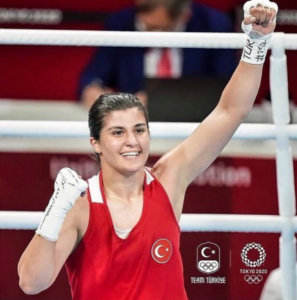
Busenaz Sürmeneli
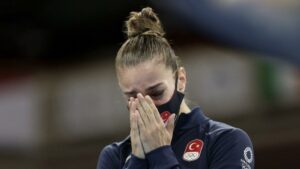
Busenaz Çakıroğlu

